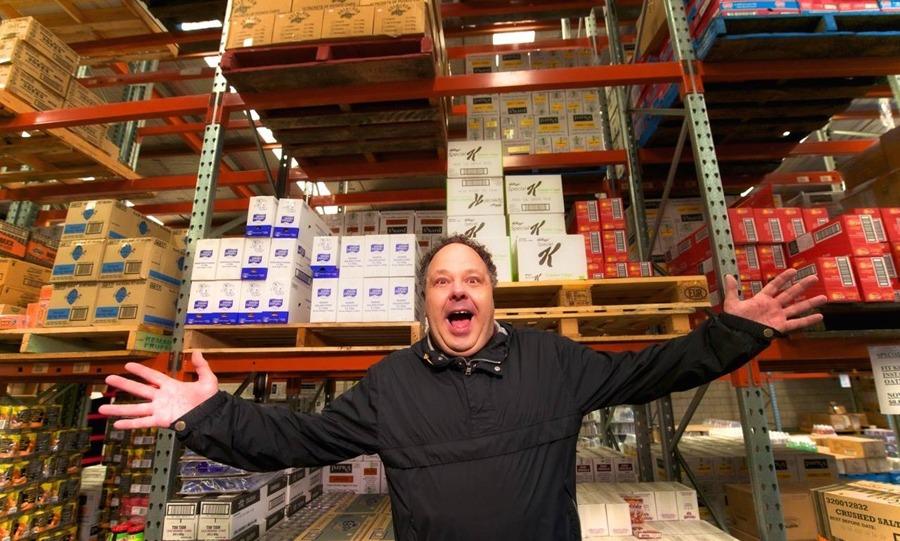Supply Warehouse is growing the direct-to-consumer side of its business through an online discount grocery site that delivers Australia-wide.
By Hailey Settineri.
For more than 20 years, Supply Warehouse has bought large parcels of residual stock from the major producers of food and grocery products, on-selling these to the discount retail market. This method of supplying discount stores with their bargains commenced in 1996 as a collaboration between Mark Goldberg, a successful fashion industry businessman, and Benny Buntman, who was a pioneer of the ‘$2 shop concept’ in Australia and whose family were responsible for the early formation of the Reject Shop.
In 2009, Supply Warehouse began retailing direct to consumers via a factory outlet in Cheltenham, Victoria.
“We had moved into a new property on Warrigal Road, which gave us main road access and so we thought we’d open up our retail store to the public,” Mr Goldberg said.
“We had this big open space at the front of our warehouse and decided to put all our odds and ends out the front, put a cash register out there and see what happens. It’s become quite popular.”
So popular, in fact, that Supply Warehouse soon extended the direct-to-consumer format online, launching an online store to make specials available to the public.
We decided that everyone around Australia should be able to save big dollars on their grocery bills, so our online store was born,” Mr Goldberg said.
Online activity
Wholesale remains the core of the Supply Warehouse business, comprising around 95 per cent of sales. The remaining five per cent comprises the factory outlet and online sales via www.supplywarehouse.com.au.
Mr Goldberg said online is growing slowly.
“Online is a very competitive and confused market,” he told Retail World. “You’ve got Coles, Woolworths, Grocery Run and now I’ve seen Kogan has gotten into it as well.
“All those retailers are trying to be grocery shopping websites. They’re trying to take you away from going into a physical store. That’s not what we’re about – we just put specials on.”
Mr Goldberg said all of its stock available online is at least 30 to 60 per cent cheaper than what can be found in grocery stores. This is possible due to its primary business of sourcing discounted product for wholesale and purchasing in large volumes.
The range available online is similar to that offered at the Supply Warehouse factory outlet, but there are some exceptions
“A lot of product that’s on the website, we don’t even put into the shop,” Mr Goldberg said. “It depends on the quantity. If we have a large quantity we’ll put it in both areas. If we have a small quantity we’ll just put it in the website because it obviously appeals to a larger audience, Australia-wide.”
Shipping
Another key factor in whether stock is available online is the weight of the product.
“For example, a 3lt bottle of Golden Circle juice that would be $4 to $5 in the store that we’re selling for $2,” Mr Goldberg said. “We can’t put that in a parcel and send that to Sydney, or to Bundaberg or to Bunbury or to Broome. The postage is five times more than what the article is worth.”
Supply Warehouse currently charges a flat rate of $14.95 for shipping ($30 for bulk purchases), but this will likely change as the retailer trials various specials in order to determine the most competitive, viable rate.
In January, Supply Warehouse offered free shipping to metro areas for purchases over $30.
“We’re going to do that quite regularly over the next few months because we’re still trying to determine the best rate and the best margin that we can work with to do it,” Mr Goldberg said.
“We need to also try and get a nationwide idea of costs. It’s really difficult, because we get a lot of people ordering from little country towns in northern Queensland and in Western Australia and places like that. The shipping on a $10 or $15 order can be $30 or $40, sometimes $50. Shipping is the big issue that we’re working on.”
Supplier relations
On the supplier front, Supply Warehouse continues to maintain its strong reputation as the go-to company for offloading surplus stock.
“Over the years, suppliers have relied on us to be trustworthy in how we distribute their product, how we handle the product, the quality of our warehouse and the quality of our distribution,” Mr Goldberg said.
“There are other people around the place doing what we do, but we’ve proven over a long period of time that we can be trusted as far as looking after people’s brands and the currency that they invest into their brands.”
Mr Goldberg said the emergence of charitable organisations that collect and distribute some streams of excess stock has not affected Supply Warehouse.
“The excess food business is so big there’s enough for everybody, really,” he said.
“Charities like Foodbank can only take what they can handle and what they need for a weekly distribution., and there’s a lot more than that in the marketplace.
“If people want to clear stock, get stuff out of their warehouses because it’s the end of the financial year, because they’re doing a stocktake, or because they need to clear space for fresh stock, they come to us.”


